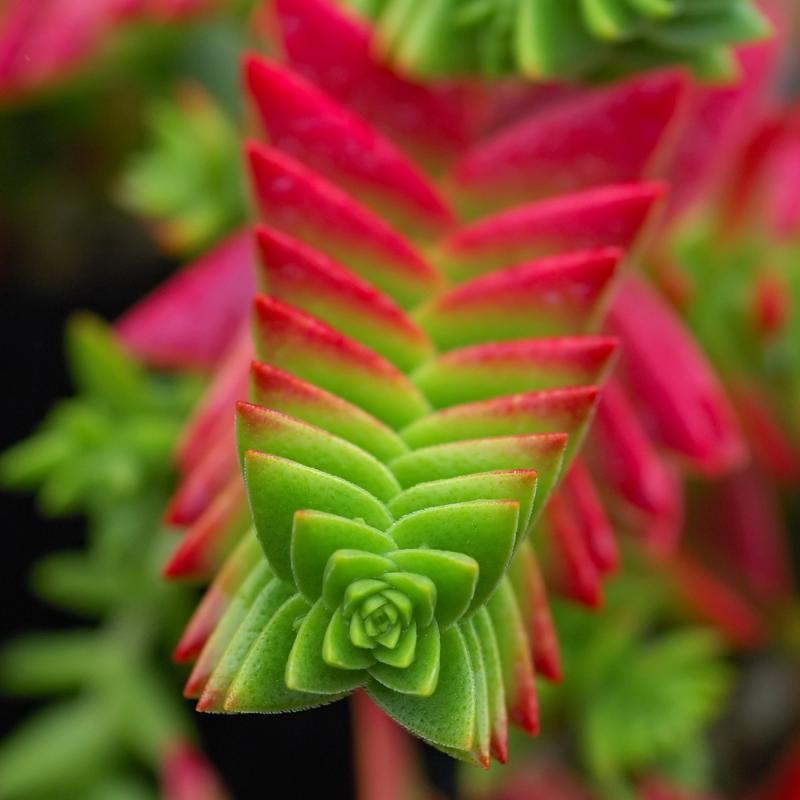Let’s face it – babies are cute. Humans have a built-in attraction for large, symmetrical heads, big eyes, small mouths and button noses. Then there are shark babies born with big mouths and complete sets of teeth. Sharks can have up to 15 rows of teeth, and grow and lose 50,000 teeth in their lifetime.
But fear not, the Shark's Tooth houseplant (Crassula corymbulosa also known as C. capitella thyrsiflora) is an attractive (and non-sharp!) succulent. It has stacks of thin, pointed leaves and hails from the rocky, dry mountains of Namibia and South Africa. The small leaves are thick and triangular, and grow stacked up around a central stem. It is in the same family as the jade plant.
The symmetrical pointed leaves start out green but turn a blush red when exposed to the sun. The Shark’s Tooth will grow vigorously with very little care and quickly fill a pot or hanging basket. Tiny white flowers bloom in the summer.
For best results, mimic its homeland and grow Shark's Tooth in cactus potting soil that drains well. Add sand or other gritty material to the soil. These hardy plants do not need fertilizer; the potting soil has all the nutrients they need to produce new growth.
These succulents grow best in full light such as a sunny windowsill. Plants grown in dim light will grow tall and spindly and will not flower.
Because it is a succulent, never let it become soggy or let the pot sit in water. That said, it does need regular watering from April to September when it is actively growing. Cut back on watering when it is into dormancy during late summer, fall and winter.
Let the soil dry out completely and then give it a good soaking until water runs out of the drainage holes in the bottom of the pot. Because they can go through long periods of drought, they are ideal for beginner gardeners or experienced growers who tend to forget to water regularly.
Shark’s Tooth thrives in warm, even hot environments with the perfect temperature between 60°F and 75°F. In winter, do not let it get below 50°F. They do best in low humidity, so they adapt well to the typical American home during winter. Keep them away from drafts.
You can bring Shark’s Tooth plants outside during the summer where they will thrive in hot, direct sunlight. It is hardy in USDA zones 9 to 11. You can repot your Shark's Tooth plant whenever it doubles in size.
You can propagate Shark’s Tooth plants by rooting leaves. Let the cut end of the leaf form a callus before inserting the end into the soil. You can treat the callused end with rooting hormone to speed up the process. They root easily, and with a little luck, you will have your own adorable babies, although ones with big teeth, not big eyes.

















































